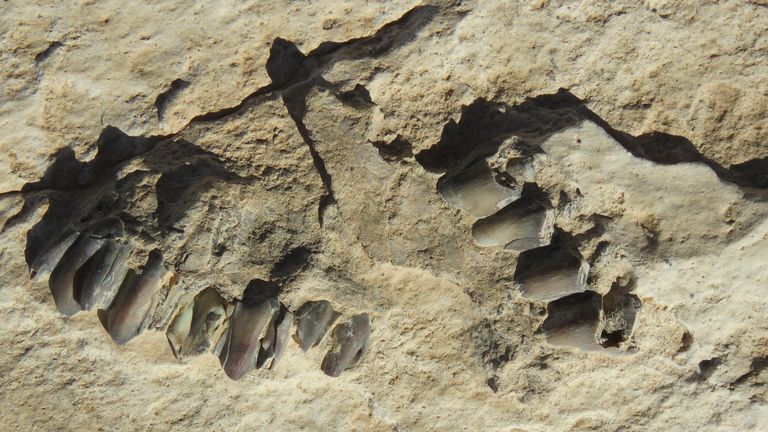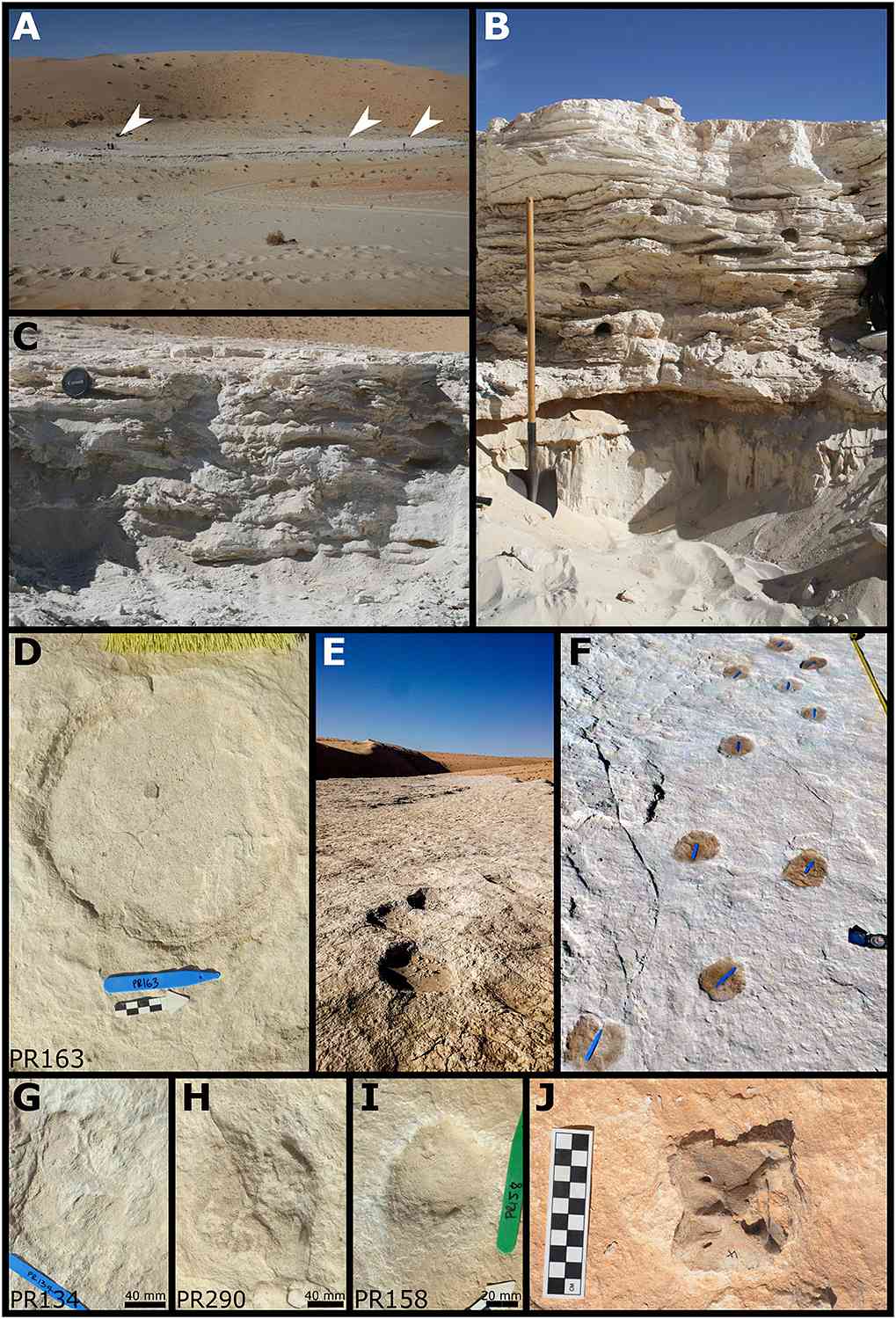A set of 120,000-year-old footprints recently found near a dry lake may be the earliest evidence of human ancestors in the Arabian Peninsula.
In a study published in Science Advances this month, researchers announced the discovery of hundreds of fossilized footprints at Alathar lake in Saudi Arabia’s Nefud Desert. Among the markings were depressions made by horses, camels and elephants, but scientists also uncovered footprints that appeared to be made by Homo sapiens.
As National Geographic notes, it is believed the imprints were made more than 100,000 years ago, and if confirmed, would make them the earliest sign of human activity in the area.
“We immediately realized the potential of these findings,” Mathew Stewart, a lead author on the study, said in a statement regarding the discovery.
“Footprints are a unique form of fossil evidence in that they provide snapshots in time, typically representing a few hours or days, a resolution we tend not [to] get from other records,” Stewart, of the Max Planck Institute for Chemical Ecology, continued.
The researchers believe animals and humans were congregating near the lake for water and foraging, especially as conditions became dry.
“We know people visited the lake, but the lack of stone tools or evidence of the use of animal carcasses suggests that their visit to the lake was only brief,” Stewart explained.
The humans who likely left the prints lived during the last interglacial period, which caused humid conditions across the region, the Max Planck Institute said. The period represented a time of migration for early humans and animals since the added humidity allowed easier access through desert regions.’
“At certain times in the past, the deserts that dominate the interior of the peninsula transformed into expansive grasslands with permanent freshwater lakes and rivers,” Richard Clark-Wilson of Royal Holloway, one of the lead authors of the study, said in the statement.
“It was during these periods of climatic upturn that human and animal populations dispersed into the interior, as shown by the archaeological and fossil record,” he continued.
Added Stewart: “It is only after the last interglacial [period] with the return of cooler conditions that we have definitive evidence for Neanderthals moving into the region. … The footprints, therefore, most likely represent humans, or Homo sapiens.”
According to the institute, the discovery will now put emphasis on the Arabian Peninsula’s role in human prehistory, which has largely focused on Africa and Eurasia.


















